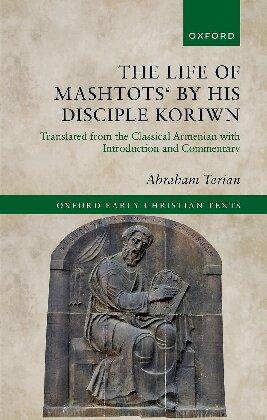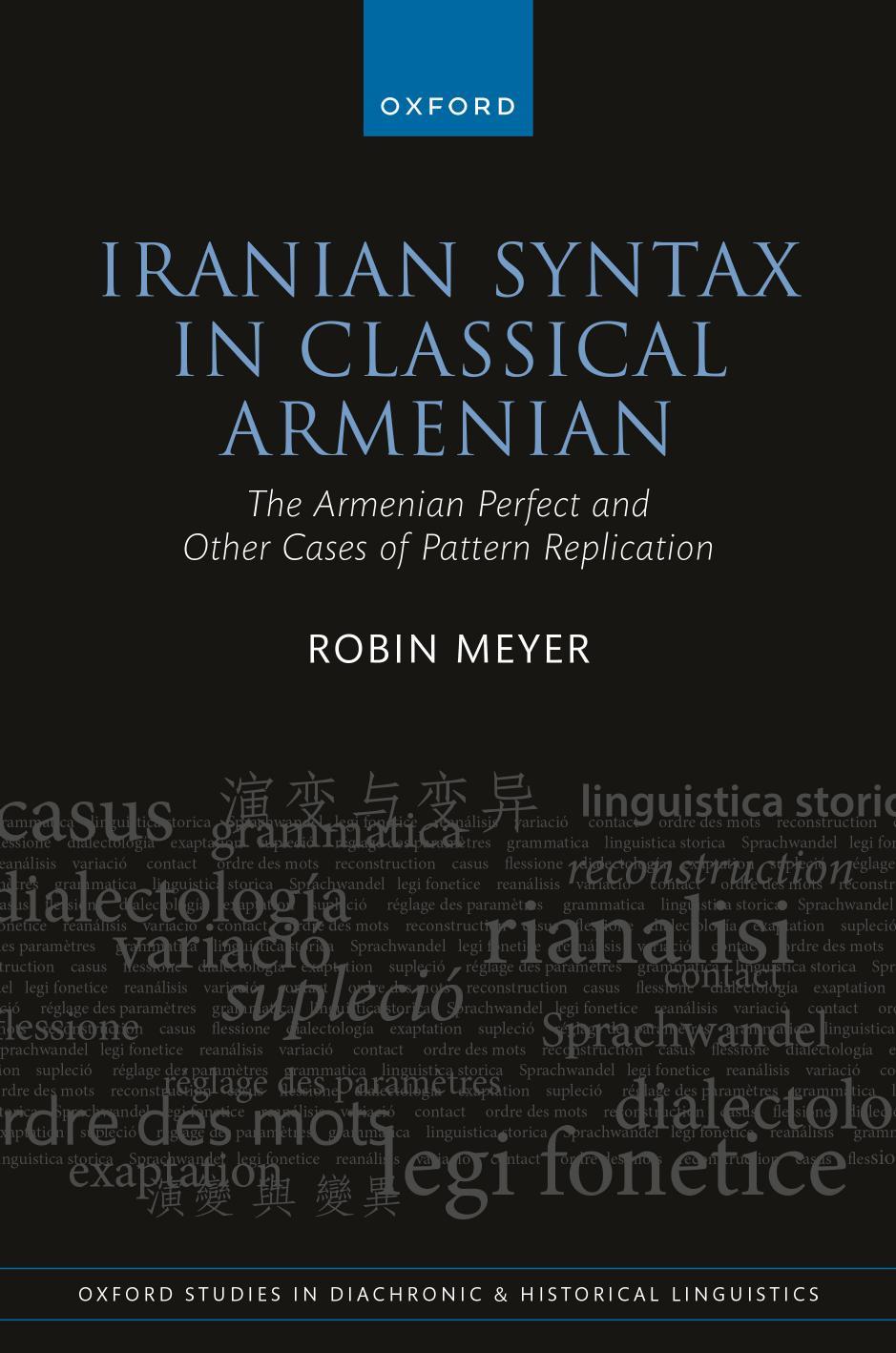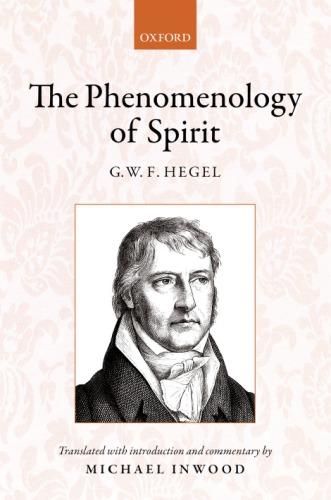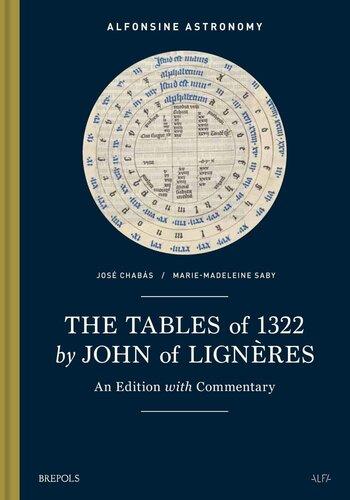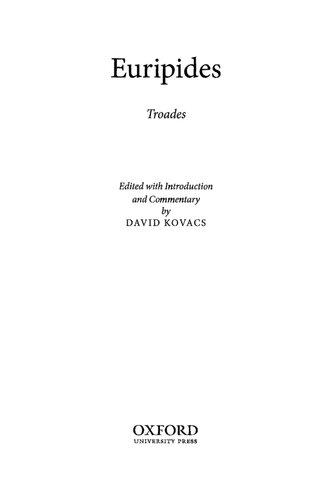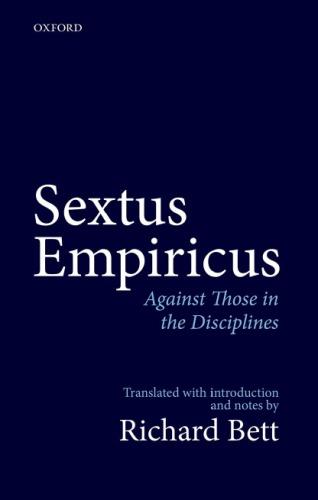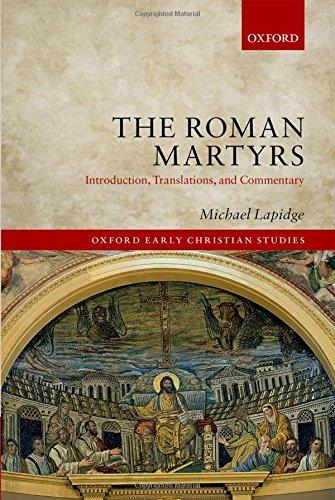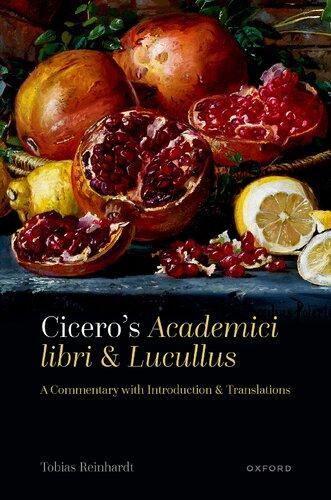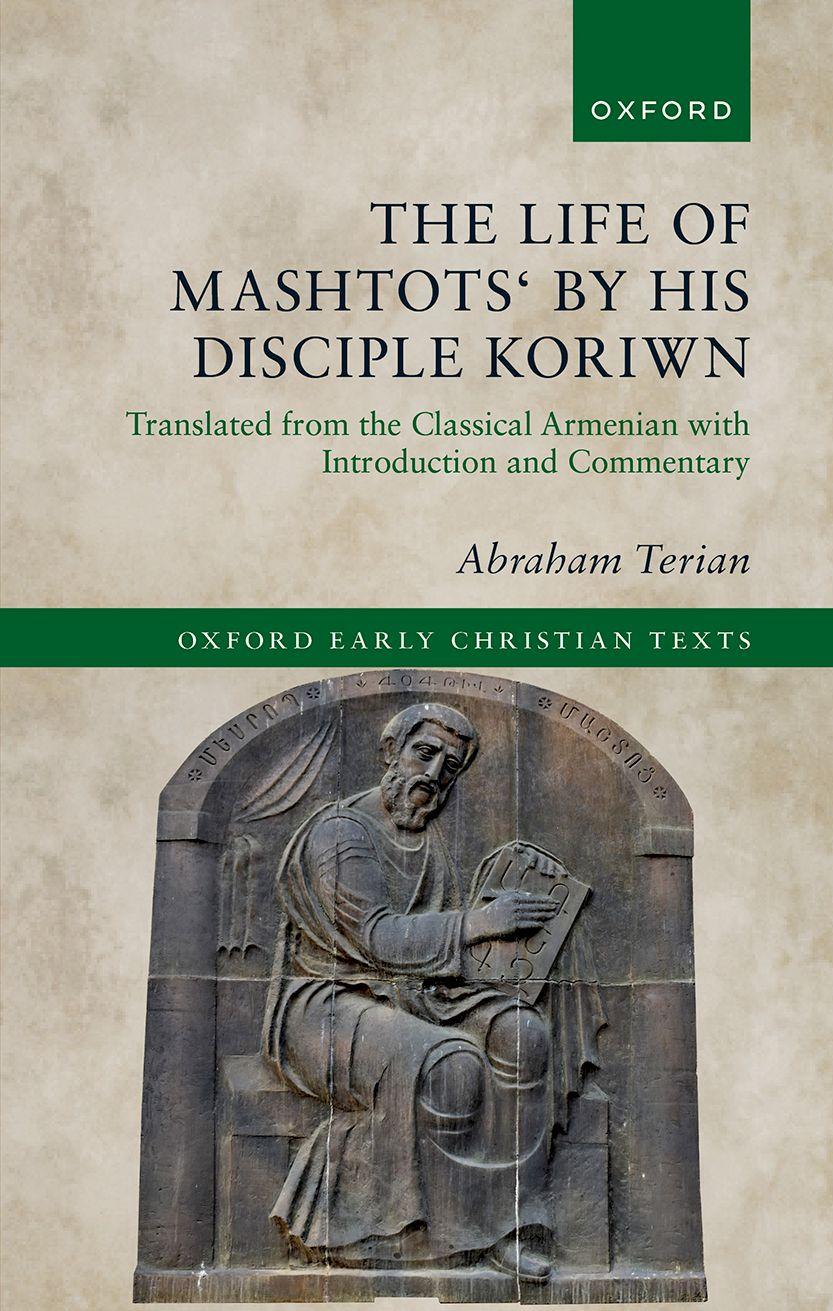PART I Introduction
Introduction
Prior to the fifth century of our era, Armenians wrote in Aramaic, Parthian or Arsacid Pahlavi, Greek, and Syriac languages in which they conducted official transactions and cherished their sacred texts.1 The invention of a native script in ad 406, followed by an avalanche of translations that covered much of the literary heritage of the Early Church in the East,2 was a most decisive event in the history of the Armenian people that sealed their destiny as a Christian nation. This
1 Artak Movsisyan, The Writing Culture of Pre-Christian Armenia, trans. Varditer Grigoryan and Mary Grigoryan (Yerevan: Yerevan University Publishers, 2006), 198–255.
2 A significant number of works in Greek and Syriac from the early centuries of the Christian Era were translated into Armenian in the fifth century; see the section ‘Translations into Armenian’ in Robert W. Thomson, A Bibliography of Classical Armenian Literature to 1500 ad, Corpus Christianorum (Turnhout: Brepols, 1995), 29–88, and passim for early writings by native authors; idem, ‘Supplement to A Bibliography of Classical Armenian Literature to 1500 ad: Publications 1993–2005’, Le Muséon 120 (2007) 163–223; Levon Ter-Petrossian, Ancient Armenian Translations, trans. Krikor Maksoudian (New York: St. Vartan Press, 1992; for Armenian readers, Garegin Zarbhanalian, Matenadaran haykakan t‘argmanut‘eants nakhneats‘: dar D–ZhG (Library of Early Arm. Translations: IV–XIII Cent.) (Venice: Mkhit‘arean tparan, 1889).
For early Armenian literature, see Karekin Sarkissian, A Brief Introduction to Armenian Christian Literature (London: Faith Press, 1960, 2nd edn, Bergenfield, NJ: Michael Barour Publications, 1974); The Heritage of Armenian Literature: Vol. I. From the Oral Tradition to the Golden Age, ed. Agop J. Hacikyan et al. (Detroit: Wayne State University Press, 2000); Vahan Inglisian, ‘Die armenische Literatur’, in Armenisch und kaukasiche Sprachen, ed. Gerhard Deeters et al., Handbuch der Orientalistik 1.7 (Leiden and Cologne: Brill, 1963), 156–250; Charles A. Renoux, ‘Langue et littérature arméniennes’, in Christianismes orientaux: Introduction à l’étude des langues et des littératures, ed. Micheline Albert, Initiations au christianisme ancien (Paris: Cerf, 1993), 107–66; Vache N. Nalbandyan et al., Histoire abregée de la littérature arménienne médiévale, du V au XIII siècle, traduit de l’armenien par V. A. Issahakyan (Yerevan: Sovetakan Grogh, 1986); Manuk Abeghyan, Istoriia drevnearmianskoĭ literatury (Yerevan: Acad. of Sciences of the Arm. SSR, 1948; repr. 1975); for Armenian readers, idem, Hayots‘ hin grakanut‘yan patmut‘yun, girk‘ ar ajin: skzbits‘ minchev X dar (History of Ancient Arm. Literature, Book I: From the Beginning to the X Century) (Yerevan: Acad. of Sciences of the Arm. SSR, 1944); Norayr Pogharian, Hay groghner (Arm. Writers), (Jerusalem: St. James Press, 1971); and for a bibliography: Poghos Khach‘atrian, Hay hin grakanut‘ean matenagitut‘iwn (Bibliology of Old Arm. Literature) (Yerevan: Tigran Mets, 2016).
came about a century after (St) Gregory the Illuminator succeeded in converting the nobility of the land, in ad 301, beginning with its Arsacid king (St) Trdat (Tiridates III, reigned 298–330).3 The tireless protagonist of the new enlightenment, at a time when parchment codices were replacing papyrus scrolls, was (St) Mashtots‘ (c.360–440), also called Mesrop by certain writers.4 To complete the work of evangelism begun by Gregory, whereby the Kingdom of Armenia became the first state to adopt Christianity as its official religion, the missionary-minded Mashtots‘ was fully persuaded that the translation of the Bible into Armenian was a must to reach the masses, to instruct them in the faith. That his motivation was essentially religious, rather than secular or socio-political, is borne out by the text translated here.5 His dream to come up with a set of letters, a convenient alphabet for the phonetic dictates of the language, was only the beginning of this great endeavour. This also helped bridge land and people unequally divided since the treaty of Akilisenē (usually dated to c.387) between the two superpowers of the time: the Byzantine or East Roman Empire in control of the lesser western part of Armenia, and Sasanian Persia in control of the greater eastern part.6
The dramatic development was recounted not by a historian but by an orator, the eulogizer Koriwn, a disciple of Mashtots‘. Consequently, there are historical gaps, at times at critical points, in the Life of Mashtots‘— one of the earliest extant compositions in the newly invented alphabet. There is, nonetheless, a certain historical perspective in the Life, in that Koriwn regarded his work as another Acts of the Apostles, the biblical book which recounts the spread of Christianity.
3 The Paikuli monument with bilingual inscription names the Sasanian Narseh (r. 293–302) as king of Armenia, a territory he lost after suffering defeat by Galerius at Osḩa in Basean in 298. Thus, the previously proposed date (287) for the beginning of Trdat’s reign has to be abandoned. With his zeal for the new faith, Trdat went to war to halt the persecution of Christians by the Roman Emperor Maximinus Daia, who in 311 invaded Armenia (Eusebius, Historia Ecclesiastica, 9.8.2). The latter establishes the conversion of Trdat at an earlier date, usually placed in 301.
4 On the variants of the name, see the discussion below, on Mashtots‘ in Armenian and non-Armenian sources of the fifth century.
5 For a discussion, see Hagop J. Nersoyan, ‘The Why and When of the Armenian Alphabet’, JSAS 2 (1985–6), 51–71.
6 For more, see comment on 3.2 (36.9). On the details of the partition, see Anne E. Redgate, The Armenians, The Peoples of Europe (Oxford: Blackwell, 1998), 137; on later adjustments, see ibid. 140–65; cf. Nikoghayos Adontz, Armenia in the Period of Justinian, ed. and trans. Nina G. Garsoïan (Lisbon: Calouste Gulbenkian Foundation, 1970), 7–24.
Following up on this theme, historians of the fifth century sustained the perceived continuity of the Armenian people with God’s people in the Scriptures, hence their moral emphasis, a trajectory in Armenian literature.7
Like Koriwn, Armenian writers of the century drew on a wide range of Early Christian works dependent on the Classical tradition, and were well acquainted with the respective literary genres known in Late Antiquity. A substantial part of their writings could be classified as persuasive literature, documents for reinforcing the Christian faith primarily, but not devoid of other aims underlying their narratives. On their part, Armenian writers—historians in particular—were able to utilize powerful and proven symbols as they dwelt on native heroes, producing works evocative of strong religious and patriotic ideals while upholding the dynastic repute of their respective patrons.8 They provided icons of identification for future generations and succeeded in leaving a permanent imprint on the way in which later generations viewed their faith. More importantly, the scrupulously devout and patriotic orientation of the early Armenian writers imprinted itself indelibly on the Armenian literary tradition.
The various aspects of literacy in the mid-fifth century compel us to think of Mashtots‘ not just as an inventor of alphabets and his disciples as simply translators who needed an alphabet in order to embark upon their work. A considerable attainment of learning (paideia) was essential to achieve these, and there was an expected deportment that followed learned men. Their rhetorical skill was considered the best indicator of their learning. Educated men occupied an important place in the public arena and wielded great power through their sponsors or patrons. Words and the use of words were the most important
7 For more on this perspective, see Robert W. Thomson, ‘The Concept of “History” in Medieval Armenian Historians’, in Eastern Approaches to Byzantium: Papers from the Thirty-third Spring Symposium of Byzantine Studies, University of Warwick, Coventry, March 1999, ed. Antony Eastmond (Aldershot: Ashgate, 2001), 89–99.
8 For a review of early Armenian historiography, see Theo Maarten van Lint, ‘From Reciting to Writing and Interpretation: Tendencies, Themes, and Demarcations of Armenian Historical Writing’, in The Oxford History of Historical Writing: Volume 2. 400–1400, ed. Sarah Foot and Chase F. Robinson (Oxford: Oxford University Press, 2012), 180–200; cf. Robert W. Thomson, ‘The Writing of History: The Development of the Armenian and Georgian Traditions’, in Il Caucaso: Cerniera fra Culture dal Mediterraneo alla Persia (Secoli IV–XI): 20–26 aprile 1995, 2 vols., Settimane di studio del centro italiano di studi sull’alto Medioevo 43 (Spoleto: Centro italiano di studi sull’alto Medioevo, 1996), 1:493–520.
tools in their possession; the forms of speaking and writing were valued by educated contemporaries who readily recognized them. This was their badge of social standing.9
A. THE LIFE OF MASHTOTS‘
Koriwn was a translator, an occupation for which he was prepared with others by their teacher Mashtots‘. He considered himself a privileged pupil, no doubt for being among the first (1.2). He speaks fondly of his filial relationship as he refers to his/their spiritual ‘father’ in the few self-references, where he names himself but once (20/19.5).
We do not know much about him except for the rare personal remarks, where he also divulges just as little information about his associates, some of whom he names. He tells us nothing about his specific contribution to the collaborative effort of translating biblical books and patristic writings. His biblical quotations do not indicate any of this.10 He was part of a team or a school of translators and, judging from his preface to the book, a studious fellow among them. He was probably more at home with Greek than with Syriac, and in 429 was on a mission to Constantinople to acquire more Greek manuscripts of the Bible, which necessitated a revision of the earlier translation from varying types of Greek and Syriac texts (ch. 20/19).11 He returned two years later, bringing also the canons of the Council of Nicaea (325) and those of the newly convened Council of Ephesus (431). He must have been deservedly distinguished, having been asked by fellow disciples, even by the most illustrious senior among them, the locum tenens of the Catholicosate and Bishop of Ayrarat, the ‘honourable’ Yovsep‘ of Hoghots‘m, to write about their beloved teacher (1.1 [22.14–15]). Considering it a great privilege, the author declares himself ‘the least’
9 Peter Brown, Power and Persuasion in Late Antiquity: Towards a Christian Empire, The Curti Lectures (Madison: University of Wisconsin Press, 1992), 41.
10 A comparison of Koriwn’s biblical citations with those of the Armenian Bible shows little harmony between the two; see Hakob H. K‘yoseyan, Surbgrayin vkayakoch‘umnerĕ Koryuni ‘Vark‘ Mashtots‘um’ (The Scriptural Citations in Koriwn’s Life of Mashtots‘), Ējmiatsin 50.4–6 (1993) 39–49.
11 Koriwn was probably middle-aged at this time—assuming that he was among the first disciples and accomplished enough to teach others; 12.1–6 (58.2–16). The acquired manuscripts were most likely of the fairly developed type of Byzantine text (more on the Armenian Bible below).
A. The Life of Mashtots‘
qualified disciple for such an honour (1.2 [22.18]). The understatement, known as litotes in rhetoric, purposefully represents the author as less significant than he is, thus achieving an ironic effect. Upon further encouragement by fellow disciples, Koriwn embarks on his task, which, though not lengthy, proves to be a truly remarkable work. It consists of some thirty average pages in manuscript form (fifteen folia), or nearly twice as many when we consider the fact that only uncials (Arm. erkat‘agir, lit., ‘iron-forged letters’) were used through the end of the first millennium of the Christian Era.12
The request seems to have been for a special occasion in Oshakan: for a memorial service in 443, commemorating the third anniversary of the teacher’s death and the likely transfer of his remains to the newly built shrine by the chancellor Vahan Amatuni.13 This is the last
12 A corruption of the text at 16/15.10 (64.3–4), coupled with the assumption of a Georgian origin of the name Koriwn, led certain scholars at the turn of the twentieth century to surmise that he probably belonged to the Georgian group of students mentioned there. For a summary of the arguments, see Garnik Fntglian, Koriwn, Vark‘ Mashtots‘i, Ughgheal ew Lusabaneal (Koriwn, Life of Mashtots‘: Emended and Annotated) (Jerusalem: St. James Press, 1930), 18–22, 34. The Armenian name is the word for a lion’s whelp, corresponding to the diminutive for Leo, Leon, Leontios, or Leonidas, the early Armenian form of which is Ghewond (cf. HAnB 2:676–7). The name suggests that he hails from Eastern Armenia and not from the Byzantine-controlled regions; cf. Ghewondēos and Ghewondēs, fellow disciples named in 17/16.5 (66.3) and 20/19.5 (74.26) respectively. Koriwn’s Armenian identity is absolutely clear, declared in his opening line and seen in his sustained enthusiasm throughout the book, especially in his inclusive language when describing the teaching endeavours throughout the districts of Armenia (ch. 12). It is inconceivable that when speaking of the local pupils gathered around Mashtots‘ in Georgian territory, he would declare himself one of ‘those among them who were found worthy’ (16/15.10 [64.3–4]), especially when he had been with Mashtots‘ all along and introduces himself contrarily in the opening page (1.2 [22.18]). Another repeated point for his supposed Georgian origin and episcopal appointment to the Georgian royal court derives from an argumentum ex silentio, namely, the absence of his name in mid-fifth-century Armenian Church assemblies. That Koriwn must have held a high ecclesial office is simply another presupposition, so too the counter argument it necessitates: that he died probably soon after the composition of the Life, before the Council of Shahapivan (444) or the concord of the Christian faith signed in Ashtishat (450/1)
13 Cf. the encomiastic Sharakan Srbots‘ Hr ip‘simeants‘ (Hymn to the Hrip‘simean Saints) by Catholicos Komitas (in office 615–28), composed in alphabetic acrostic on the occasion of the transfer of the relics of St Hrip‘simē and her martyred companions to the church built near Ējmiatsin in 618/619 (Sharakan Hogewor Ergots‘ Surb ew Ughghap‘ar Ekeghets‘woys Hayastaneayts‘ [Hymnal of Spiritual Songs of the Holy Orthodox Armenian Church] [Jerusalem: St. James Press, 1936], 573–82). For a study and a translation, see Abraham Terian, ‘The Poetics of a Church and the Structure of a Hymn: The Sharakan Anjink‘ Nuirealk‘ by Catholicos Komitas’, SNTR 12 (2007), 141–60.
dated event recorded in the Life (ch. 27/26), the body of which ends with a brief tribute to Vahan (ch. 28/27), an epilogue (ch. 29/28), a chronological summary with the regnal years of the Sasanian rulers of the period (ch. 30/29), and a postscript possibly by the author himself. It ends with the second year of Yazdegerd II (440, the year of the death of Mashtots‘, on 17 February), or his ‘first’ year if the accession year—the time from accession to the first day of the New Year—is not to be counted, as is consistently the case in this piece of chronological information and throughout the Life. The date of composition (443) is further substantiated by the mention of Vardan, the martyred hero of the 451 war with the Persians, as a student of Sahak (12.8 [58.19–21]), and the favourable mention of Vasak Prince of Siwnik‘ as a devout supporter of Mashtots‘ (15/14.6–7 [62.1–7]). Later authors of the fifth century speak negatively of Vasak as a lapsed traitor during the 451 war.14 The Life was thus composed as a particular encomium intended for oral delivery first, a formal expression of praise (Arm. govest) to extol Mashtots‘ and his memorable work. Yet the written tribute is as much a memorial for the author as it is for his teacher.
More than a translator, Koriwn is an eminently inspiring rhetorical writer, unconcerned about historical details considered to have been familiar to his immediate audience. Unfortunately, pronouncements on his writing have sometimes been less than complimentary, especially by those who are critical of his ‘historiography’, faulting him for not detailing crucial developments.15 In this introduction I endeavour
14 Eghishē, History, esp. ch. 4 (MH 1:623–32); Ghazar, History, esp. 2.36 (MH 2:2263–4).
15 Misreading the Life as historiography persists; e.g. Jean-Pierre Mahé, ‘Entre Moïse et Mahomed: réflections sur l’historiographie arménienne’, REArm 23 (1992), 121–53, here 124–5; Gabriele Winkler, Koriwns Biographie des Mesrop Maštoc‘, Übersetzung und Kommentar, OCA 245 (Rome: Pontificio Istituto Orientale, 1994), 92, needlessly supplies the bracketed words ‘[Dies ist die Geschichte]’ at the very beginning of her translation; Giusto Traina, ‘Tradition et innovation dans la première historiographie arménienne’, in L’historiographie tardo-antique et la transmission des savoirs, ed. Philippe Blaudeau and Peter Nuffelen, Millennium-Studien zu Kultur und Geschichte des ersten Jahrtausends n. Chr. 55 (Berlin: De Gruyter, 2015), 153–4; van Lint, ‘From Reciting to Writing and Interpretation’, 182–3. Robert W. Thomson includes Koriwn’s work in his list of histories, ‘The Major Works of Armenian Historiography (Classical and Medieval)’, in Armenian Philology in the Modern Era: From Manuscript to Digital Text, ed. Valentina Calzolari with the collaboration of Michael E. Stone, Handbook of Oriental Studies, Section 8 Uralic & Central Asian Studies 23/1 = History of Armenian Studies 1 (Leiden: Brill, 2014), 314–15. Studies in Armenian as of the nineteenth century, faulting Koriwn for historiographic shortcomings, are too numerous to cite; see e.g. T‘orgom Gushakian, Uruagits hay matenagrut‘ean
to thwart such criticisms by showing that Koriwn’s work falls outside the genre of historiography, even though historical elements abound in his work. Among the more important historical features is the secondary, collaborative role played by the Catholicos Sahak (in office 386–428; d. 7 September 439), the last of the heirs of St Gregory the Illuminator to hold the office. He is introduced in Chapter 6 and featured next to Mashtots‘ on several occasions in the ensuing narrative. Sahak’s enthusiastic support for the endeavour notwithstanding, the somewhat tense relationship between the two men—implied every now and then—seems to have been glossed over by Koriwn, at times apologetically.16 There is also the supportive role of the Armenian King Vramshapuh,17 whose counsel—however helpful it might have seemed at first—yielded but abortive results (6.5–12).
Mashtots‘ was a visionary monk, fully committed to the ascetic life yet eager to render his service to the Church. In its course he became an ardent missionary, inventor of letters, Bible translator, founder of schools, organizer of bands of translators, and eminent teacher. His career began as an officer in the royal secretariat, from where he moved to a ‘higher calling’, to serve Christ in the spreading of the Gospel. In his recounting of this piece of information from the Life at the end of the fifth century, the historian Ghazar P‘arpets‘i specifies that this was during the reign of the Armenian Arsacid King Khosrov IV (387–9), in whose court Mashtots‘ ‘was appointed to the office of royal scribes’.18 Surely, he must have been baptized before taking ascetic
(Conspectus of Armenian Bibliography), ed. Isahak Minasian (Jerusalem: St. James Press, 2001), 42–7 (a posthumous publication).
16 In the Life, see 6.1–12; 7.1; 12.7–9; 16/15.11; 17/16.24–5; 19/18.7; 20/19.1–10. On the early attempts to fill some historical gaps, especially on the relation between Mashtots‘ and the Catholicos Sahak, see Thomson, The History of Łazar, 49 n. 2; Paruyr Muradyan, Kovkasean mshakut‘ayin ashkharhĕ ew Hayastanĕ (The Caucasian Cultural World and Armenia), Pt. I (Yerevan: National Acad. of Sciences of RA/‘Gitut‘iwn’, 2008), 65–77.
17 Vramshapuh’s regnal years are usually specified as 401–17 (at times wrongly as 389–414), his sixth year being synchronized with the eighth year of the Sasanian king Yazdegerd I (406), the year of the invention of the Armenian letters. Given the consistent omission of the ‘accession year’ by the author (on which see the extended comment on the chronology at the end of the Life), Vramshapuh’s reign ought to have begun in 400.
18 History, 1.10.1 (MH 2:2211). The partition of Armenia between the Persian (Sasanian) and Roman (Byzantine) empires in 387 marks the beginning of Khosrov’s reign as vassal king under the Sasanian rulers, who controlled Greater or Eastern
vows, and it is clear from the Life that he found joy in asceticism to the point of establishing ascetic orders. His mode of asceticism is described as periodic, solitary, and at times with groups led by him.19 The practices detailed by Koriwn have much in common with Syrian practices of the time, which allowed for social involvement whenever needed in the community. This is but in anticipation of his greater involvement and still greater achievement.
That Mashtots‘ was a high-ranking cleric is emphasized in the Life (e.g. 13.1; 15/14.4; 16/15.10; 18/17.8) and attested by contemporary sources that mention him. The same facilitate a reconciliation of the variants of his name. Nikoghayos Adontz (Adonts‘) rightly identifies him with Mastoubios the Chorepiskopos of Armenia to whom were addressed the three lost treatises On the Deceit of the Persian Magi (Περί της ἐν Περσίδι μαγικής) of Theodore of Mopsuestia (d. 428), according to the annotation of these treatises by Photius, Patriarch of Constantinople (in office 858–67 and 877–86).20 In his insightful
Armenia, while the Byzantines controlled Lesser or Western Armenia. The Armenian Arsacid dynasty ended in 428. On its demise, see comment on 17/16.24.
19 See 4.1–7; 23/22.1–3, 9–10; cf. 13.4; 15/14.5 and comments on the respective passages. Cf. the contemporaneous description of the fourth- and fifth-century ascetics in north-west Syria by Theodoret of Cyrrhus, A History of the Monks of Syria, trans. R(ichard) M. Price, Cistercian Studies 88 (Kalamazoo, MI: Cistercian Publications, 1985).
20 Masht‘ots‘ ew nra ashakertnerĕ est otar aghbiwrneri (Masht‘ots‘ and His Pupils According to Foreign Sources), Azgayin Matenadaran 111 (Vienna: Mkhit‘arean Tparan, 1925), 6–10. For the remarks by Photius on the now lost work(s) by Theodore, see Bib. Photii, PG 103:281. Photius mentions that Theodore wrote three books against magic:
Read the three brief books by Theodore On Persian Magic and How It Differs From Christianity; dedicated to Mastubius, an Armenian and suffragan bishop. In the first book the accursed doctrine of the Persians, introduced by Zarades [Zoroaster], concerning Zuruam [Zervan], whom he makes the beginning of all things and calls Fortune, is expounded; how that, having offered a libation to beget Hormisdas, he begot both him and Satan; thus the mixing of blood. Having set forth this impious and disgraceful doctrine in plain words, he refutes it in the first book. In the other two books he discusses the Christian faith, beginning from the creation of the world and at the same time rapidly going down to the law of grace. This Theodore is believed to be Theodore of Mopsuestia, since he mentions with approval the heresy of Nestorius, especially in the third book. He also foolishly talks of the restoration of sinners to their former condition. (Bibl. Cod. 81)
There are to date no extant fragments of this work; see George Florovsky, The Byzantine Fathers of the Fifth Century, ed. Richard S. Haugh et al., trans. of selections from Vizantīĭskīe ottsy by Raymond Miller, Collected Works of Georges Florovsky 8 (Vaduz, Liechtenstein: Büchervertriebanstalt, 1987), 206. Florovsky observes: ‘St. Photius mentions that Theodore wrote three books against magic; Ebedjesu mentions two; and the Chronicle of Seert mentions one’ (ibid.).
A. The Life of Mashtots‘
article, Adontz goes on to show how the various and yet early attestations of the name (Masht‘ots‘/Mashtots‘/Mashdots‘/ Mazhdots‘/Mesro(v)b/ Mesro(v)p) ultimately point to its derivation from the Iranian deity Mazd-, with the suffix -ak corresponding to Arm. -ots‘. All his suggestions are intriguing since they also help explain the alteration to Mesrob/Mesrop; all forms being recognizable in the name Mastoubios. In Greek-speaking Lesser Armenia, his name seems to have been perpetuated as Mastrobos, which survives in its Armenian form, Mastrovbos,21 in an early colophon copied subsequently, now extant in an eleventh-century Gospel manuscript at the Matenadaran.22
Equally suggestive of the clerical standing of Mashtots‘ is the letter of Proclus of Constantinople (in office 434–46) addressed to both Sahak and Mashtots‘ (spelled Mazhdots‘) in its Armenian version, a reply to a letter sent by the Armenian bishops in 436 expressing concern about heterodox doctrines being brought to Armenia.23 Quite significantly, such correspondence is alluded to in the Life (24/23.2
21 The o becoming ov before b, as in Arm. Yakovbos = Gk. Ιakobos; Arm. Yovb = Gk. Iob; etc., with the usual -os ending of masculine names in Greek.
22 Matenadaran MS 10434, of the year 1069 (fo. 287r), copied from an exemplar belonging to Anania, the tenth-century abbot of Narek; Hayeren dzeragreri hishatakaranner, E-ZhB darer (Colophons of Armenian Manuscripts, V–XII Centuries), ed. Artashes S. Mat‘evosyan, Nyut‘er Hay Zhoghovrdi Patmut‘yan 21 (Yerevan: Academy of Sciences of the Arm. SSR, 1988), 1; cf. Muradyan, Kovkasean mshakut‘ayin ashkharhĕ ew Hayastanĕ, 59–61. James R. Russell suggests ‘bearer of good news or reward’ as the meaning of the name, on the basis of an Iranian form, mwjdg or mozhdag, attested in Manichaean texts in Middle Parthian of Turfan, and thus identical in meaning to ‘Agathangelos’, the enigmatic author of the History of Armenia’s conversion to Christianity; ‘On the Name of Mashtots’, Annual of Armenian Linguistics 15 (1994), 67–78 (repr. in idem, Armenian and Iranian Studies, HATS 9 [Cambridge, MA: Armenian Heritage Press, 2004], 597–608). Edward Gulbekian associates the name Mashtots ‘with the ascetic practice of tonsure, the shaving of part of a monk’s head; ‘Mesrop or Maštoc‘’, in Armenian Perspectives: 10th Anniversary Conference of the Association Internationale des Études Arméniennes, ed. Nicholas Awde, Caucasus World (Richmond, Surrey: Curzon, 1997), 29–33, 368–71. Gulbekian supposes Mesrop to be the real name and Mashtots‘ the honorific surname, an epithet given for the ascetic order established by him. This is simply a reversal of an old suggestion made by Mkrtich‘ Awgerian, that Mashtots‘ is the real name and Mesrop the priestly name; Liakatar vark‘ ew vkayabanut‘iwn srbots‘ (Complete Lives and Testimony of the Saints), 12 vols. (Venice: S. Ghazar, 1810–15), 5:281. On the old scholarly debate over the name(s), and the consensus view on the originality of Mashtots‘, see Artashes A. Martirosyan, Mashtots‘ (Patma-k‘nnakan tesut‘yun) (M. [A Historico-critical Examination]) (Yerevan: Academy of Sciences of the Arm. SSR, 1982), 151–2. According to Achar yan the etymology of the name is unknown, HAnB 3:214 (s.v. ‘Mashtots‘’).
23 The letter of Proclus, Epistola II: Ad Armenios, de fide, is extant in Greek (PG 65:855–74), with an Armenian translation that lacks the preamble preserved in Greek
[86.13]). In their reply to Proclus, Sahak and Mashtots‘ (spelled Mashdots‘) reassure him of their caution regarding heretical tendencies, as they denounce Theodore of Mopsuestia at the end.24 Also noteworthy is the correspondence between Sahak and Akakios, Bishop of Melitene, with whom Mashtots‘ had established a relationship attested in the Life (17/16.5 [66.2]).25 The high clerical standing of Mashtots‘ is depicted further in the Life, where he stands not only alongside Catholicos Sahak and King Vramshapuh of his native land, but also alongside civil and religious leaders of foreign lands visited by him. A glance through the Index of Proper Names provided at the end of the book will be enough to validate his high social/clerical standing through his contacts.
According to Koriwn, there was nothing miraculous or supernatural about the crafting of the alphabet by Mashtots‘. He did it by hard work, toiling day and night, for a considerable time. His efforts were blessed, for ‘God the All-bountiful granted him that good fortune; for by his sacred right hand he attained the stature of fatherhood, begetting new and wonderful offspring—the letters of the Armenian language’ (8.3 [48.6–11]).26 It happened while the Saint was in the region (Girk‘ T‘ght‘ots‘ [Book of Letters], ed. Norayr Pogharian [Jerusalem: St. James Press, 1994], 30–40).
24 Ibid. 41–8. It should be remembered that Theodore’s writings were tampered with by his opponents, who hoped to have him accused of heterodoxy (see comment on 7.2 [46.13]).
25 On the two letters by Akakios of Melitene, one to Sahak (and his reply), and the other to the Armenian clergy in general, see comment on 20/19.1 (74.11–14).
26 Subsequent authors have misread Koriwn’s remark on the blessed hand of Mashtots‘ as a remark on God’s hand miraculously dictating the letters; cf. Khorenats‘i, History, 3.53.7 (MH 2:2081). However, see Martirosyan, Mashtots‘, 234, for a clear understanding of Koriwn.
Of special interest are the Vatican Library frescoes of the year 1589, where on the sixth pillar of the salone sistino St John Chrysostom (347–407, Archbishop of Constantinople 398–404) is featured with the Armenian alphabet. Although the attributions of the ‘exotic’ alphabets are to equally ‘exotic’ authors in the minds of Renaissance thinkers, the association of Chrysostom with Armenia is a stretch of his banishment in 404, his confinement in Cucusus (today’s Göksun in Turkey) prior to his subsequent exile to Pityus and death on the way, at Comana Pontica (near Tokat, in the Yeşil Irmak valley). See Paul Nelles, ‘The Vatican Library Alphabets, Luca Orfei, and Graphic Media in Sistine Rome’, in For the Sake of Learning: Essays in Honor of Anthony Grafton, ed. Ann Blair and Anja-Silvia Goeing, 2 vols., History of Science and Medicine Library/Scientific and Learned Cultures and Their Institutions 18 (Leiden: Brill, 2016), 1:441–68. All we could say with certainty is that Mashtots‘ was a late contemporary of Chrysostom, whose exile and death did not transpire in Armenian
of Edessa and Amid, from where he journeyed to Samosata to meet with a calligrapher named Rufinus (Arm. Hrop‘anos), who perfected the shapes of the uncial letters (8.6 [48.15–50.1). In Samosata Mashtots‘ embarked on the translation of the Bible immediately, utilizing Syriac and Greek manuscripts of various recensions. This was in collaboration with two of his disciples, Yovhan Ekeghets‘ats‘i and Yovsep‘ Baghnats‘i, with Rufinus himself inscribing the very first verse, Prov. 1:2: ‘To know wisdom and counsel, to discern words of prudence’ (8.7 [50.6–7]). It was indeed prudent to start the translation of the Bible with a text consisting of short and often detached sayings rather than with a book of narrative prose. However, one would think that the scriptures most urgently needed would have been those of liturgical use, the Psalter and the Gospels.
Of the thirty-six original letters of the Armenian alphabet twentyone follow the order of the Greek alphabet, excluding but three (Ξ, Ψ, Ω), and most conform to the axis of their Greek equivalents: Α/Ա, Β/Բ, Γ/Գ, Δ/Դ, Ε/Ե, Ζ/Զ, Η/Է, Θ/Թ, Ι/Ի, Κ/Կ, Λ/Ղ, Μ/Մ, Ν/Ն, Ο/Ո, Π/Պ, Ρ/Ռ, Σ/Ս, Τ/Տ, Υ/Ւ, Φ/Փ, Χ/Ք. The fifteen with peculiar sounds and for which no Greek equivalents exist, thought to conform to Parthian or Pahlavi (Middle Persian) and Syriac near-equivalents,27
territory at the time in question. On European perceptions of the Armenian language during the Renaissance, see Virgil B. Strohmeier, The Importance of Teseo Ambrogio degli Albonesi’s Selected Armenian Materials for the Development of the Renaissance’s Perennial Philosophy and an Armenological Philosophical Tradition (Yerevan: Armenian Philosophical Academy, 1998).
27 So thinks Achar yan (Hayots‘ grerĕ, 555), whose schema of these letters’ dependency on non-Greek graphemes is not incontrovertible. There has been much speculation on the Armenian alphabet’s resemblance to the Ge‘ez (Ethiopic) alphabet, even in the absence of any established order or link. On the peculiar forms of the Armenian letters, see Liparit Sadoyan, ‘Hayots‘ Mesropasteghts aybubenĕ’ (The Armenian Alphabet Created by Mesrop), PBH (2005), 2:58–86. On their derivation especially from Greek, see Ashot G. Abrahamyan, Hay gri ew grch‘ut‘yan patmut‘yun (History of the Armenian Alphabet and Paleography) (Yerevan: Haypethrat, 1959). On demonstrable, albeit minor, Coptic influence, see comment on 8.4 (48.9–11). On their evolving forms, see the vast Album of Armenian Paleography, ed. Michael E. Stone, Dickran Kouymjian, and Henning Lehmann (Aarhus: Aarhus University Press, 2002), 77–110; cf. Dickran Kouymjian, ‘Armenian Paleography’, COMS 277–82.
For a comprehensive list and illustrations of early Armenian inscriptions, see Timothy Greenwood, ‘A Corpus of Early Medieval Armenian Inscriptions’, DOP 58 (2004,) 27–91. For the earliest inscriptions, dating from before ad 447, see Michael E. Stone, ‘Armenian Inscriptions from the Fifth Century from Nazareth’, REArm 22 (1990–1), 315–22; cf. idem, The Armenian Inscriptions from the Sinai, ed. idem, with Appendixes on the Georgian and Latin Inscriptions by Michel van Esbroeck and William Adler, HATS 6 (Cambridge, MA: Harvard University Press, 1982). For a summary of these
are interspersed within the Greek order: Ը, Ժ, Լ (originally pronounced Ղ, judging from the above sequence, and the Ղ as Լ), Խ, Ծ, Հ, Ձ, Ճ, Յ, Շ, Չ, Ջ, Ր (originally pronounced Ռ, judging from the above sequence, and the Ռ as Ր), Վ, Ց. The predominantly Greek character of the Armenian alphabet is further seen in the fact that they were perfected by a Greek calligrapher who, obviously preferring curves over angles, was also privileged to inscribe the first words of the initial translation of the Armenian Bible (ch. 8). As a result of contact with the Latin West during the First Crusade, two letters were added in the eleventh century: O, originally the diphthong ԱՒ, and Ֆ (Ō and F).
A word is necessary here on the theological connotation of certain of the thirty-six letters: the first, Ayb (Ա), is taken to signify God in the native language (the initial of Աստուած / Astuats); and the last, K‘ē ( Ք ), corresponding to Greek Chi (Χ) and resembling the already known Christogram, is taken to signify Christ (the initial of Քրիստոս / K‘ristos). Both letters correspond, in a way, to Greek Alpha and Omega (Α and Ω), ‘the First and the Last’ (Rev. 1:8), Christ’s self-designation in the Apocalypse, further clarified with the additional phrase ‘the
earliest Armenian inscriptions outside the Caucasus, see Yana Tchekhanovets, The Caucasian Archaeology of the Holy Land: Armenian, Georgian and Albanian Communities between the Fourth and Eleventh Centuries CE, Handbook of Oriental Studies/HDO Section One: The Near and Middle East 123 (Leiden: Brill, 2018), 41–136. For the earliest inscription in historic Armenia, that of the St Sargis Basilica of Tekor (Digor, 35 km SE of Kars, destroyed in the last century) dated to 478–90, see Greenwood, ‘A Corpus of Early Medieval Armenian Inscriptions’, 79–81 (inscr. A.1, fig. 1, and the bibliography there); cf. Karapet G. Ghafadaryan, ‘Tekori tachari V dari hayeren ardzanagrut‘yunĕ ew Mesropyan aybubeni ar ajin tar adzewerĕ’ (The Armenian Inscription of the Cathedral of Tekor and the Initial Forms of the Mesropian Alphabet), PBH (1962), 2:39–54; Serge N. Mouraviev, Erkataguir (ԵՐԿԱԹԱԳԻՐ) ou Comment naquit l’alphabet arménien, avec, en supplément: une paléographie arméniene des Ve–VIe/VIIe siècles et un choix de sources historiques. Les trois secrets de Mesrop Machtots ou la genèse des alphabets paléochrétiens du Caucase 1 [Sankt Augustin: AcademiaVerlag, 2010], 119–21. Among the extant thousands of Armenian manuscripts, the earliest dated are the Gospel of Queen Mlk‘ē of 862 in the Mekhitarist Library, San Lazzaro, Venice (V1144/86), and the Lazarian Gospel of 887 in the Matenadaran in Yerevan (M6200). Much work remains to be done on the more than 3,000 fragments dating from before the ninth century, preserved as pahpanakk‘, folded folia from older manuscripts used as guard-leaves, stitched as part of the binding at the beginning and at the end of a codex. So far the earliest penned specimen of Armenian writing is a sixth-century papyrus from Egypt (Bibliothèque Nationale, Paris, BnF Arm 332), an Armenian student’s Greek vocabulary/phraseology written in Armenian letters on the one side and short tales about Diogenes Laertius in Greek but likewise written in Armenian letters on the other side; see James Clackson, ‘A Greek Papyrus in Armenian Script’, Zeitschrift für Papyrologie und Epigraphik 129 (2000), 223–58.
A. The Life of Mashtots‘
beginning and the end’ (21:6; 22:13). No less significant is the seventh letter, Ē (է), literally translating Greek (ho) Ōn, the ‘Existent One’ (or ‘He who is’), the name God gives to himself in Exodus 3:14, and the only single letter in Armenian which constitutes a word. Moreover, allegorically it signifies perfection, especially following the biblical six days of creation (Gen. 2:2–3). Since the letters were also used for numbers, as in dates and Bible references,28 much speculation surrounds their mystical significance, especially when computing the numerical value of words.29 This, however, is beyond our interest.
Mashtots‘ commands the primary role in the narrative, which builds up like a crescendo in a musical composition, reaching its loudest point with his arrival in Armenia bearing the newly invented alphabet, like Moses with the Ten Commandments—indeed, faring better than Moses (9.4–5 [52.1–8]). Several parts of the Life present Mashtots‘ as a teacher, active in gathering disciples. He is a teacher like Jesus, the Teacher par excellence, who taught by personal example, as did the Apostles and their disciples in succession, passing on a tradition faithfully transmitted by Mashtots‘ to his disciples (23/22.11–14, 19–21 [82.16–84.6, 17–24]; cf. ch. 10/6).30 He is an exemplar worthy of emulation by those who knew him, and by extension, by readers of the text. He is an ardent missionary, with a burden to evangelize neighbouring peoples for whom he is said to have invented alphabets: on his initiative for the Georgians, whose territory he visited twice (chs. 16/15 and 19/18) and for the ‘Aghuank‘’, generally translated as ‘Caucasian Albanians’, speakers of a language akin to Udi, upon their initiative (17/16.22 [68.24–8]).31 The latter script, once considered
28 The numerical value of the 36 letters is consecutive for each nine, arranged perpendicularly in four columns: Ա–Թ for single digits, 1–9; Ժ–Ղ for tens, 10–90; Ճ–Ջ for hundreds, 100–900; Ռ–Ք for thousands, 1,000–9,000 (e.g. 1,111 = ՌՃԺԱ; 9,999 = ՔՋՂԹ).
29 Not unlike gematria with the Hebrew letters.
30 Curiously, Koriwn names only thirteen of the many disciples of Mashtots‘ (including himself), as if corresponding to the Twelve, with the addition of St Paul. Their names, in alphabetic order, are: Danan, Enoch, Eznik, Ghewondēos, Ghewondēs, Hovhan of Ekegheats‘, Hovhan the Confessor, Hovsep‘ of Hoghots‘mants‘, Hovsep‘ of Paghan, Koriwn, Mushē, T‘adik, and Tirayr. A certain Jeremiah is named, a disciple of Sahak. See the Index of Proper Names at the end of this book. Later tradition adds thirty more names to their rank; see the list in Krikor Maksoudian, The Origins of the Armenian Alphabet and Literature (New York: St. Vartan Press, 2006), 169–74.
31 On the misnomer and the specificity of the language, as related to Udi, see Wolfgang Schulze, ‘Caucasian Albanian and the Question of Language and Ethnicity’,
lost—though tabulated in two Armenian manuscripts from the fifteenth and sixteenth centuries respectively (see comment ad loc.), resurfaced in 1996 when Zaza Aleksidze identified two palimpsests among the Georgian manuscripts discovered in 1975 at St Catherine Monastery in the Sinai (N/Sin-13 and N/Sin-55). The palimpsests, with traces of much-fragmented paschal readings from the Gospel of John and others from the Synoptics, Acts, the Epistles, and the Old Testament, apparently belonged to a single codex: a lectionary possibly from the seventh century and based—with slight variations—on the Jerusalem textual tradition that survives in Armenian and Georgian, from a lost Greek original. Georgian selections from the Life of Anthony by Athanasius and from other Desert Fathers were copied over the erased text (which also contains an Armenian layer of Hexaplaric readings) in the tenth or eleventh centuries by the scribe Michael, who left his colophons in both palimpsests. It is enough to say that a comparison of all three scripts in their uncial forms, Armenian, Georgian, and Caucasian Albanian, leaves little or no doubt about a common derivation, necessitated by the region’s conversion to Christianity.32
Koriwn tells of the training of scribes and translators, the opening of schools and the spread of literacy into the far corners of the land. But these were not the first Christian schools in Armenia, a multicultural and multilingual land. A late contemporary of Koriwn, the
in Sprachen, Völker und Phantome: Sprach- und kulturwissenschaftliche Studien zur Ethnizität, ed. Peter-Arnold Mumm, Münchner Vorlesungen zu Antiken Welten 3 (Berlin: De Gruyter, 2018), 275–312; cf. Robert H. Hewsen, ‘Ethno-History and the Armenian Influence upon the Caucasian Albanians’, in Classical Armenian Culture, ed. Thomas J. Samuelian, UPATS 4 (Chico, CA: Scholars Press, 1982), 27–40; and Nora Dudwick, ‘The Case of the Caucasian Albanians: Ethnohistory and Ethnic Politics’, Cahiers de Monde russe et soviétique 31.2–3 (1990), 377–84.
32 See comments at 8.1 and 4 (on the Armenian script); 16/15.2 (on the Georgian script); and 17/16.22 (on the Caucasian-Albanian or Udi-related script). On the social and cultural ties within the Caucasus in this period, see Cyril Toumanoff, Studies in Christian Caucasian History (Washington, DC: Georgetown University Press, 1963), 33–144, and 105–6 n. 160 for a brief history of scholarship—before the recent revival of apologetics. For general discussions on the creation of the three alphabets, see Werner Seibt and Johannes Preiser-Kapeller, eds., Die Entstehung der kaukasischen Alphabete als kulturhistorisches Phänomen: Referate des internationalen Symposions, Wien, 1–4 Dezember 2005 (Vienna: Verlag der Österreichischen Akademie der Wissenschaften, 2011); cf. Juan Signes Codoñer, ‘New Alphabets for the Christian Nations: Frontier Strategies in the Byzantine Commonwealth between the 4th and 10th Centuries’, in New Perspectives on Late Antiquity in the Eastern Roman Empire, ed. Ana de Francisco Heredero, David Hernández de la Fuente, and Susan Torres Prieto (Newcastle upon Tyne: Cambridge Scholars Publishing, 2014), 116–62, esp. 131–8.
author of the Buzandaran, when recounting the activities of Catholicos Nersēs the Great (in office 353–73), tells us: ‘In all the cantons of Armenia, in different localities he established schools. The languages of instruction in these schools were Greek and Syriac’ (EH iv.4). By the end of the fifth century, another historian, Ghazar P‘arpets‘i, writes retrospectively about the tediousness of constant translation from Syriac during worship, and about members of the clergy wasting their time on Syriac:
The blessed Mashtots‘ agonized constantly, with concern upon seeing the great effort and the even greater expenditure of the young men of Armenia, who at great cost and through distant journeys and with time consuming preoccupation were wasting their days in the schools of Syrian learning. For the liturgy of the church and the readings of scripture were conducted in Syriac in the monasteries and churches of the Armenian people. But the people of such a vast country were quite unable to comprehend or profit from it, and the incomprehension of the Syrian tongue kept the ministers toiling and was unprofitable to the people. (History, 1.10.6–7; trans. mine)33
Foremost of the overwhelming volume of translations is that of the Bible. As noted above, this was first done from Syriac and varying types of Greek texts under the initiative of Mashtots‘ (8.6–8 [48.15–50.9]), and later revised under the initiative of Sahak with Greek manuscripts brought from Constantinople by Eznik and Koriwn following the Council of Ephesus in 431 (20/19.5–9 [74.24–76.11]). The revision notwithstanding, the Armenian Bible retains residual readings from the Syriac translation in certain parts while showing evidence of various Greek recensions in others. Traces of the Syriac layer are evident especially in Genesis and the Psalms, and to some extent in the Gospels and the Epistles.34 Other mixed readings derive from
33 Text in MH 2:2212. Ghazar’s remarks are equally apropos of the period following the removal of Sahak from office in 428 by the Sasanian Court. Those appointed to succeed him for the next two decades surrounded themselves with Syriac-speaking clergy from among their Syrian and north-Mesopotamian countrymen; see Gabriele Winkler, ‘An Obscure Chapter in Armenian Church History’, REArm 19 (1985), 85–180.
34 In Genesis, e.g., the Armenian has 30 additions, 12 omissions, and 29 variants of proper names that agree with the Peshitta text and not the Septuagint (LXX). For more, see Manuel J. Jinbachian, ‘The Armenian Translation of the Bible’, in Übersetzung— Translation—Traduction: Ein internationales Handbuch zur Übersetzungsforschung, ed. Harald Kittel et al. (Berlin: De Gruyter, 2011), 3:2366–72; cf. Claude E. Cox, ‘The Syriac Presence in the Armenian Translation of the Bible, with Special Reference to
